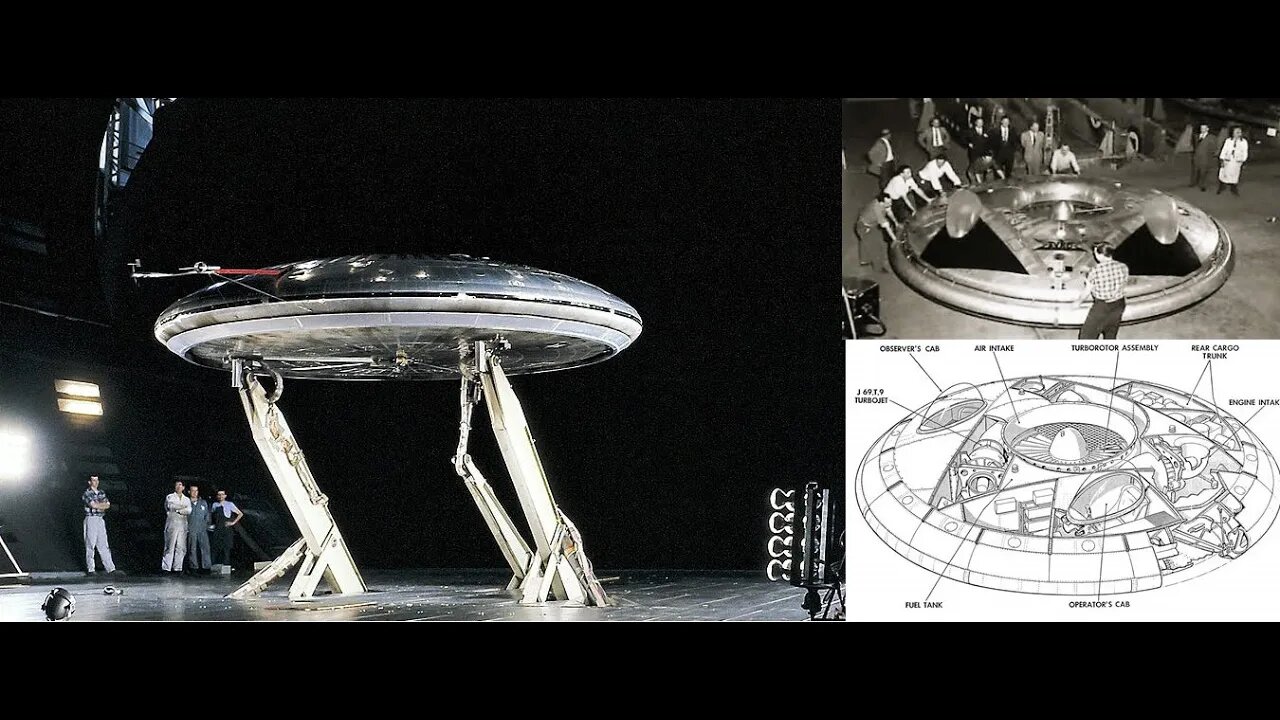Premium Only Content

Avrocar: The Story of America's Flying Saucer 1950s
The Avrocar was initially intended to be a vertical take-off and landing (VTOL) aircraft that could travel at speeds of up to Mach 4. During the Cold War, traditional airport runways were seen as easy targets for an attack. With a fleet of VTOL aircraft, the United States could build underground airports, protected from Soviet bombers. The Avrocar would ascend through a shaft and then zip away at supersonic speeds.
The Avrocar’s disc shape and ability to hover bring to mind the flying saucers that we associate with extraterrestrial sources, but the project never really got off the ground–both figuratively and literally. From the start, the design was unstable and difficult to fly. Through extensive testing and modifications, Canada’s Avro Aircraft Limited was able to improve stability, but the Avrocar was still only able to hover at a height of about three feet and travel at speeds not exceeding 35 mph.
The National Archives and Records Administration (NARA) is home to a number of records from the Avrocar project. Some of these records were declassified in the fall of 2012, including schematic drawings and project reports. Other records, including the motion picture progress reports featured in this post, have been available to the public for much longer.
Aside from their discoidal subject, the filmed progress reports on the Avrocar are very similar to film reports for other military projects. Manufacturers of aircraft and other equipment were often contractually required to provide reports on film to demonstrate successes or the obstacles facing completion. In NARA’s records you will find film reports for everything from helicopters to missile systems.
-
 1:59:43
1:59:43
Side Scrollers Podcast
2 days agoRIP Hulk Hogan + Payment Processor CENSORSHIP Has Officially Begun + More | Side Scrollers
12.8K7 -
 12:14
12:14
Nikko Ortiz
1 day agoMilitary Fails Of The Week
2.81K6 -
 1:16:31
1:16:31
Omar Elattar
9 months agoThe Untold Story: How Vans Became a $3 Billion Dollar Shoe Empire In 75 mins
1.62K -
 LIVE
LIVE
Lofi Girl
2 years agoSynthwave Radio 🌌 - beats to chill/game to
225 watching -
 1:56:31
1:56:31
The Pascal Show
15 hours ago $0.17 earnedGHISLAINE FLIPS?! DOJ Receives SECRET LIST of 100 Epstein Associates!”
1.79K1 -
 10:17
10:17
Dr Disrespect
11 days agoIt's Time To Get Serious
175K27 -
 2:15:09
2:15:09
Badlands Media
22 hours agoDevolution Power Hour Ep. 375: Obama’s Orders, Ukraine’s Collapse & the Inversion of Justice
287K74 -
 2:32:03
2:32:03
BlackDiamondGunsandGear
11 hours agoAFTER HOURS ARMORY w/ DLD & John from GOA & FLR
23.6K3 -
 1:05:28
1:05:28
Man in America
12 hours agoTREASON? Obama, Hillary, and Soros in the New World Order Agenda EXPOSED w/ Mel K
81.8K63 -
 2:22:46
2:22:46
The Connect: With Johnny Mitchell
13 hours ago $4.62 earnedOne Man's Mission To Stop Human Trafficking: How A Billionaire Mercenary Saved Hundreds Of Children
20.7K16